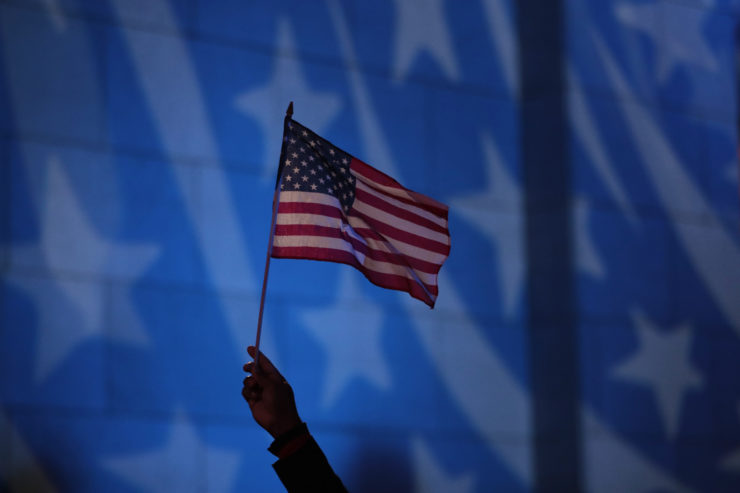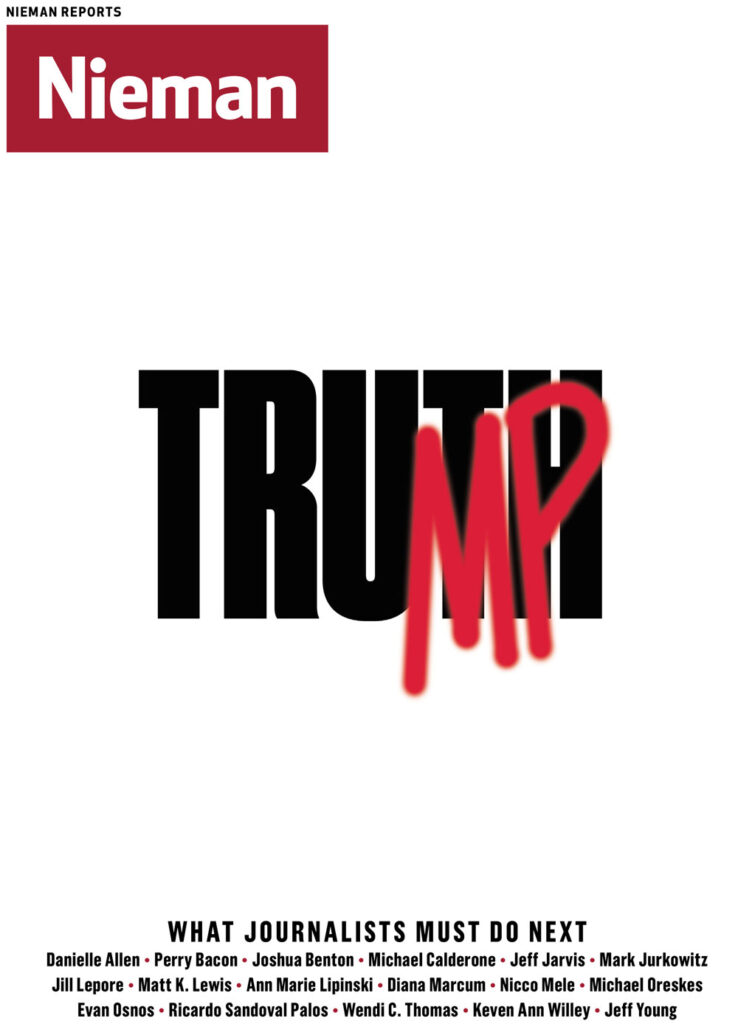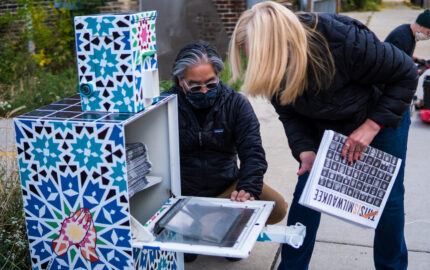There was a whole lot that went right in 2016 campaign coverage.
If you were reading Slate’s Jamelle Bouie, PRRI’s Robert Jones, or New America’s Lee Drutman, you understood how race, identity, and our changing culture were deeply shaping this election, creating a kind of “white identity politics.” The crew at Vox was excellent at linking Trump’s rise with that of nationalist leaders and parties in Europe. The New York Times’s Nate Cohn wrote a piece in June explaining Obama’s relative strength with white, working class voters and how Clinton needed that bloc to win in states like Ohio and Wisconsin.
My NBC News colleague Katy Tur was on the road every day with Trump and did what the best candidate reporters do: deeply understand the person that they are covering. When others would say “now Trump is going to pivot” and behave like a traditional candidate, Tur would always remind the audience that the businessman was determined to campaign and win his way. She was right.
A week before the election, The Atlantic’s Ron Brownstein described the risky approach Clinton was taking, campaigning in states like Florida and North Carolina in the final days instead of Michigan and Wisconsin. In the final days, FiveThirtyEight’s Nate Silver emphasized that Clinton was the favorite, but there was great uncertainty in part because of the large number of undecided voters. Bingo.
But a lot went wrong as well. And there are lessons for political journalists looking forward.
1. Stop Predicting
I first suggested Trump wouldn’t win a single primary, then that he wouldn’t win the overall GOP primary, and then that he would lose the general.
But I don’t think the problem was that my predictions were wrong, but that I was making them in the first place. Too much of political reporting has turned into predicting events that will happen right in front of us in a few days or weeks. When will Hillary Clinton announce? Who will run her against her? Can Jeb win? When the "Access Hollywood" video came out, the coverage quickly became “how does it affect Trump” in x state or among y voting bloc.
The increasing use of data and political science in political reporting is a huge plus. When I covered campaigns in 2004 and 2008, way too much time was spent suggesting various events were so-called game changers. I think most campaign reporting now recognizes how unimportant most campaign events and speeches are compared to factors like approval and disapproval ratings and partisanship.
That data can help us explain to our audience what is happening or just happened in a more sophisticated way than in a previous era of campaign coverage.
But way too often, that data is used to predict, instead of to explain.
I understand why this happens. It’s human instinct. I live in D.C, a city full of policy wonks. And yet I was asked nearly every day for two years the same question: who is going to win?
On my best days, I would say “Clinton is the favorite, but I don’t know.” Political journalists need to use those last three words a lot more.
2. Understand race, gender, culture, and identity and tell that part of the story
Identity has always been a part of politics, particularly in the post-1960s era, with civil rights legislation entrenching blacks in the Democratic Party and pushing Southern whites to vote Republican.
Both the Black Lives Matter movement and the rise of Trump were stories in part about identity, race, and culture. And I think at times the press either failed to understand these stories were about identity or was not fluent in discussing that aspect of them. The coverage of Trump supporters and their views on race and other issues was lacking in sophistication, as if journalists had not read the many dozens of studies and books on subjects like racial resentment, Reagan Democrats, and the rise of Islam in America.
A lot of the coverage on election night and afterward was cloaked in euphemisms, that Trump had won “rural America” or the “working class,” with journalists I think wary of using the term “white” but thereby obscuring the fact that black and Latino working class and rural voters did not back Trump.
Trump was often criticized for not having policy ideas. In the traditional sense of white papers, he did not. But if you view politics through identity and culture, Trump was speaking quite clearly about his goals as president. He constantly told his audiences what he favored and what he opposed. But he mostly spoke in terms of values and ideals, not taxes and spending.
3. Cover what the candidates say
Traditionally, candidates are “on message” and their speeches are exactly what they said the day before. But the major candidates in 2016 did not follow this model. Trump’s words were important because he often said things that were demonstrably false or mused publicly about ideas that he hadn’t really vetted yet but then became part of his campaign. Clinton, if you listened carefully, was the most pro-civil rights, pro-abortion rights, pro-gun control Democratic nominee in recent memory.
I often heard people suggest that this campaign was not about policy. The 2016 race may have not been covered as a policy debate by the press, but Clinton (and her de facto running mate President Obama) were constantly arguing with Trump about inclusion, tolerance, globalization, security, policing, immigration, and other issues.
To conclude, I would suggest that many of the weaknesses of the 2016 coverage overall were addressed during 2016, by some of the best coverage. We have much to learn, but also some people to learn from. And I hope political journalists, including myself, address some of our shortcomings immediately and not wait till 2020.




